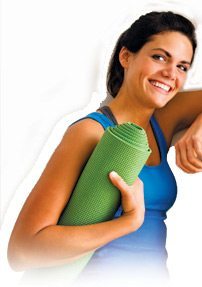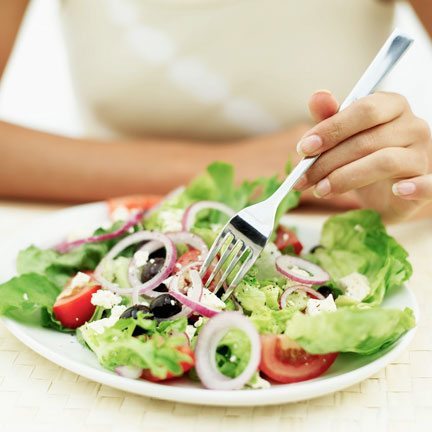
 We’re pleased to announce our latest club at the Vancouver Convention Centre
We’re pleased to announce our latest club at the Vancouver Convention Centre
Pre-Register Now At Our Membership Office Downtown
Located near the front entrance of the Convention Centre
Save $150 off the enrollment fee prior to opening!
Hurry! Offer Ends Soon!
Call 604-558-1600
Practice is the key to getting Fit and Healthy
Eating healthy and exercising regularly is a lifestyle that takes a lot of practice. One does not transform from doughnut scarfing couch potato into diet-conscious workout warrior overnight. Furthermore, we live in what is called an obesogenic environment. It means the environment is making us overweight, as is evidenced by higher than ever obesity rates at all ages.
It can take you many months to get to the point where you actually like exercising, and then many more months of incremental changes in your diet to get to the point where you achieve significant positive changes in body composition. It’s a total process that can take years to be successful.
This all needs to be broken down into manageable pieces, and must be practiced again and again. You need to look at your lifestyle as one of constant training to get better. You need to quest to get better at pushing yourself with exercise, and pushing yourself towards eating healthier and eating less if you want to be healthy, fit, strong, and look your best.
Practice at exercising and healthy eating is what gets you to somewhere that, if not perfect, is greatly improved.
Source: chatelaine.com
 3 Reasons You Need Breakfast
3 Reasons You Need Breakfast
You have plenty of reasons to skip breakfast: You’re sleep-deprived, you’re too busy to make something, eating first thing in the morning unsettles your stomach. Enough of the excuses: Breakfast is key if you want to slim down, add muscle, and succeed at work.
More Muscle
If you want a lean, muscular body, you can’t skip breakfast. Since your tank is empty, your body is highly receptive to nutrients-so fill up with the right ones to jump start protein synthesis and muscle building. A mix of protein (such as yogurt) and a small amount of carbohydrates (a piece of fruit) will give your muscles energy and help you maintain what you’ve worked so hard at the gym to achieve.
Less Fat
Eating in the morning makes you less likely to overeat during the day since your blood sugar will remain steady-as long as you don’t overdose on carbohydrates. Another reason to favor protein and fat: You’ll boost your metabolism and feel fuller longer-meaning you’ll stay away from the snack machine.
Better Concentration and Productivity
While cereal companies have funded most of the studies on breakfast’s impact on students’ academic performance, a morning meal is good for your brain. Several other studies show the regular consumption of breakfast improves performance, attention, and concentration.
Think about it: You’ve fasted all night long, your brain needs fuel to comprehend all those spreadsheets and red-flagged e-mails your boss sends. If you want cereal, stick with muesli. Try it with yogurt, berries, and nuts for a great mix of protein, fats, and carbs.
Source: menshealth.com
 Ladies’ Corner
Ladies’ Corner
5 Surprising Ways to be Heart Healthy
Eat dark chocolate
Eating dark chocolate may decrease your risk of cardiovascular disease and stroke.
Beware of diet soda
By consuming diet sodas may increase your risk of stroke.
Eat blueberries
A diet that includes blueberries may decrease the risk of developing high blood pressure.
Get just the right amount of sleep
Getting too little or too much sleep may increase the risk of heart disease and stroke
Live away from a main highway
The sound of horns, sirens and noisy trucks may take a toll on your blood vessels.
Source: myhealthnewsdaily.com
 Men’s Corner
Men’s Corner
Five Ways to Protect Your Heart
Meditate 20 minutes a day
This daily downtime may reduce your anxiety and depression by more than 25 percent.
Take the stairs
People who walk an extra 4,000 to 5,000 steps each day lowered their blood pressure by an average of 11 points.
Drink more tea
Men who drink 2 cups of tea a day are 25 percent less likely to die of heart disease than guys who rarely drink tea.
Go fishing for tuna
Omega-3 fats in tuna help strengthen the heart muscle, lower blood pressure, and prevent clotting
Snack on nuts
Harvard researchers found that men who replaced 127 calories of carbohydrates-that’s about 14 baked potato chips-with 1 ounce of nuts decreased their risk of heart disease by 30 percent.
Source: menshealth.com


 Monitoring Your Heart Rate While Exercising
Monitoring Your Heart Rate While Exercising
Heart rates are taken during exercise to indicate how hard your heart is working. Your heart rate is actually a motivating friend and, when you learn to monitor it properly, this allows you to objectively detect beneficial changes which you can’t otherwise see.
The benefits of monitoring your heart rate are:
Safety
The heart rate is a gauge by which to assess the intensity of your workout to make sure you’re not overexerting or overextending yourself. For example, if your heart rate is above your working heart rate range, it’s telling you to slow down a little and use fewer arm movements.
Effectiveness
If your heart rate indicates you’re not working hard enough, then you can work out a little more vigorously to maximize the effectiveness of your workout. To maximize your workout, you need to stay in your working range for at least 20 to 30 minutes continuously.
Incentive
By monitoring your heart rate from week to week as you participate in activities, you’ll discover that you will be able to exercise at a higher level of intensity, but at the same or lower heart rate. This is the way the heart tells you it is becoming stronger and more efficient. When you see positive results, it will motivate you to strive for even better results.
Source: jackis.com
Exercises That Can Help Strengthen Your Heart
Cardiovascular (aerobic) exercises help to condition and strengthen your heart muscle. It is generally recommended that people include at least 30 minutes of moderate cardiovascular exercise a minimum of three times per week. In addition to strengthening your heart muscle, cardiovascular exercise can also help lower your blood pressure, increase HDL (good) cholesterol, reduce your stress level, and lower your resting heart rate. Try these exercises to strengthen your heart!
Walking
Walking is an excellent choice for people who are just getting started with an exercise routine.
Cross-Country Skiing
Whether done indoors our outdoors, this is a good exercise that involves both your upper and lower body.
Swimming
Excellent low-impact cardiovascular exercise, which makes it an ideal choice for people with arthritis.
Source: quakeroats.com
Healthy Transformations
Bruschetta With Chicken
Ingredients:
- 1 tsp dried basil
- 1 tbs ricotta cheese, non-fat
- 1 oz chicken, broiled
- 3 medium tomatoes
- 2 tsp garlic
- 2 slices bread (rye, pumpernickel, 100% whole grain, flourless)
- 1 1/2 tsp oil, olive
Spices/Flavouring:
- 1/4 tsp salt, lite
- 1/4 tsp black pepper
- 1/4 tsp parsley, dried
Preparation:
Mix ricotta with salt, pepper, and parsley. Set aside. Toast bread under broiler until top becomes crusty. Spread ricotta mixture on top of bread. Mix minced garlic, olive oil, diced broiled chicken, diced tomatoes, and basil (use fresh basil if you can) and season with salt and pepper. Spread tomato mixture on top of bread. Enjoy!
Per serving: 354 calories, 22 g protein, 10 g total fat, 44 g carbohydrates.
Source: Healthy Transformations Recipes
 Build a better Salad
Build a better Salad
Building a better salad starts with the salad’s foundation: the greens. Greens are low in calories and deliver high doses of vitamins. The darker the leaves are, the more vitamins and minerals they have.
When choosing your vegetables, make your salad as colourful as possible. Each colour (green, red, yellow, orange, purple) represents a different assortment of beneficial nutrients. Also, raw veggies are low in calories, so feel free to load up on them.
Watch your portion sizes with your proteins and your legumes. Legumes, while full of fiber, are also caloric. Stick with lean proteins (chicken, ham, turkey, or fish) and try to get them as close to their natural state as possible for the greatest nutritional value.
Consider your dairy items, nuts, seeds, and other salad toppers very carefully. Aim for low fat cheese and try to have it be shredded-that way you’re getting a greater volume out of a single portion instead of having it in chunks. Don’t get too carried away with nuts and seeds. While adding protein and healthy fats to your salad, a little goes a long way.
Many times a healthy salad turns into a not-so-healthy one because of the salad dressing. People often tend to use too much, so stick with the recommended service size of two tablespoons. Watch out for low-fat dressings-they still may be high in calories and have more fat grams than you might think. Have your dressing served on the side so you have control over how much is actually in your salad.
Source: fitnessmagazine.com

Ask us today about our Healthy Transformations Program
Healthy Living Tip!
Each month check for healthy living tips. These tips will help you with your workout, eating healthy and living well.
A+ FOR AVOCADOS
One of the best ways to reduce high blood pressure is to get enough potassium – and half an avocado has more potassium than a medium-sized banana. In addition, guacamole offers a nutritious alternative when stress has you craving a high-fat treat.








